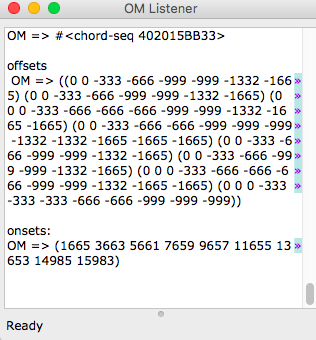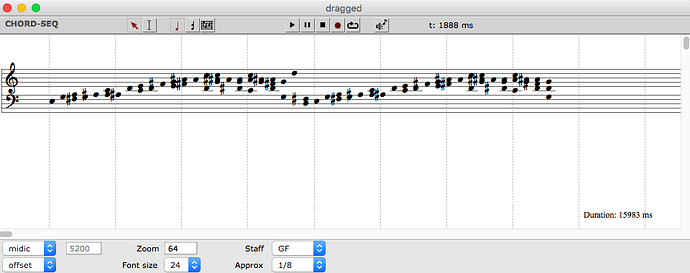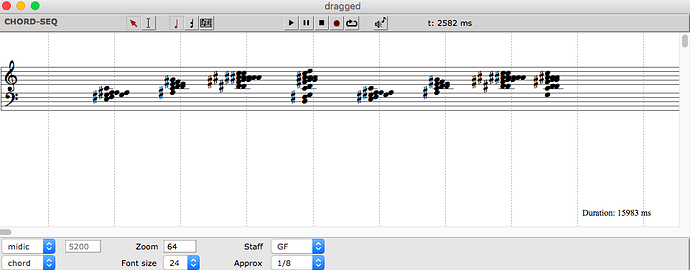There is one thing that has always puzzled me in OM (ok, actually, not just one  )
)
Let’s say I have a chord-seq with all of the individual notes as chords. And I would like to turn them into offsets, but in as many different ways as possible, as a tool for making variations.
This is possible manually of course, but there is the puzzling fact that the offsets go backwards from the last note selected, which is not very useful for what I’m trying to do. (I would love to know what the rationale is for that - there’s almost always a good reason for things like this in OM, that allows me to do something I never thought of before).
I’ve gotten better at processing lists over the years, so I suppose it might not be a big deal to reverse them. Alternately, one could group the lists of onsets accordingly. I’ve spent a considerable amount of time trying to find a practical and accurate way to do this, and it always came out wrong. There are some new tricks I’ve learned lately with lambda patches, that I’ll be trying out this afternoon, but if anyone has experience with this and I’m missing something simple and obvious, I’d be very grateful for a tip.
best,
Michal



